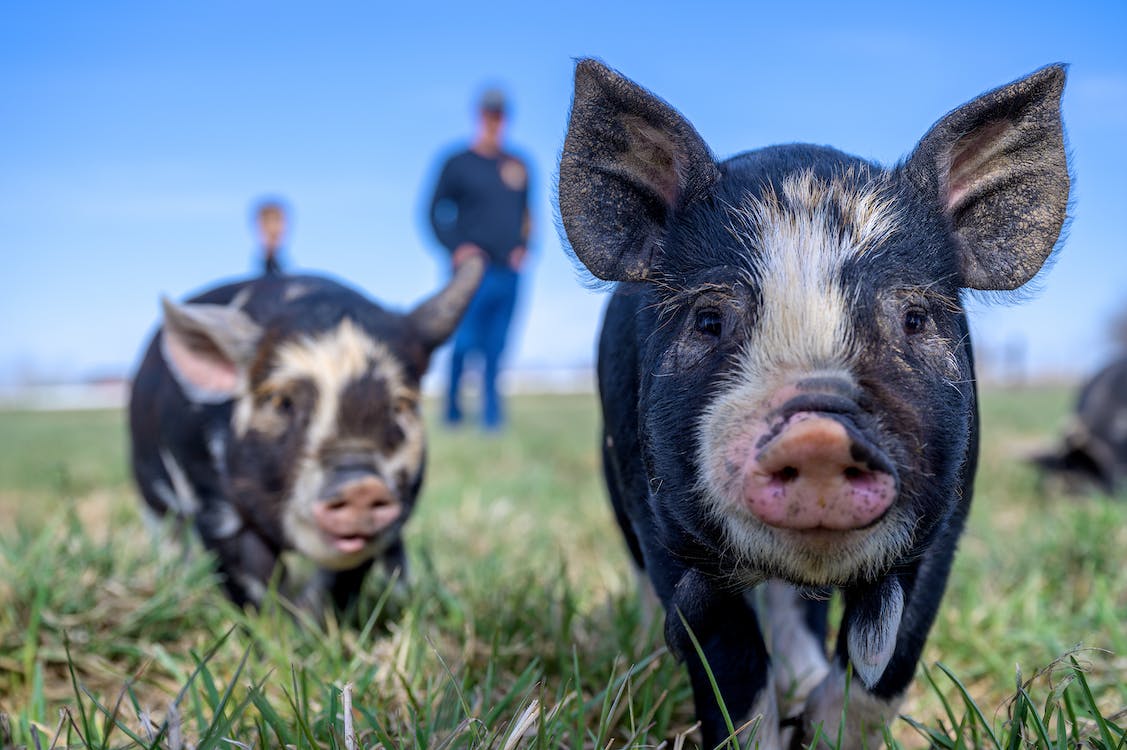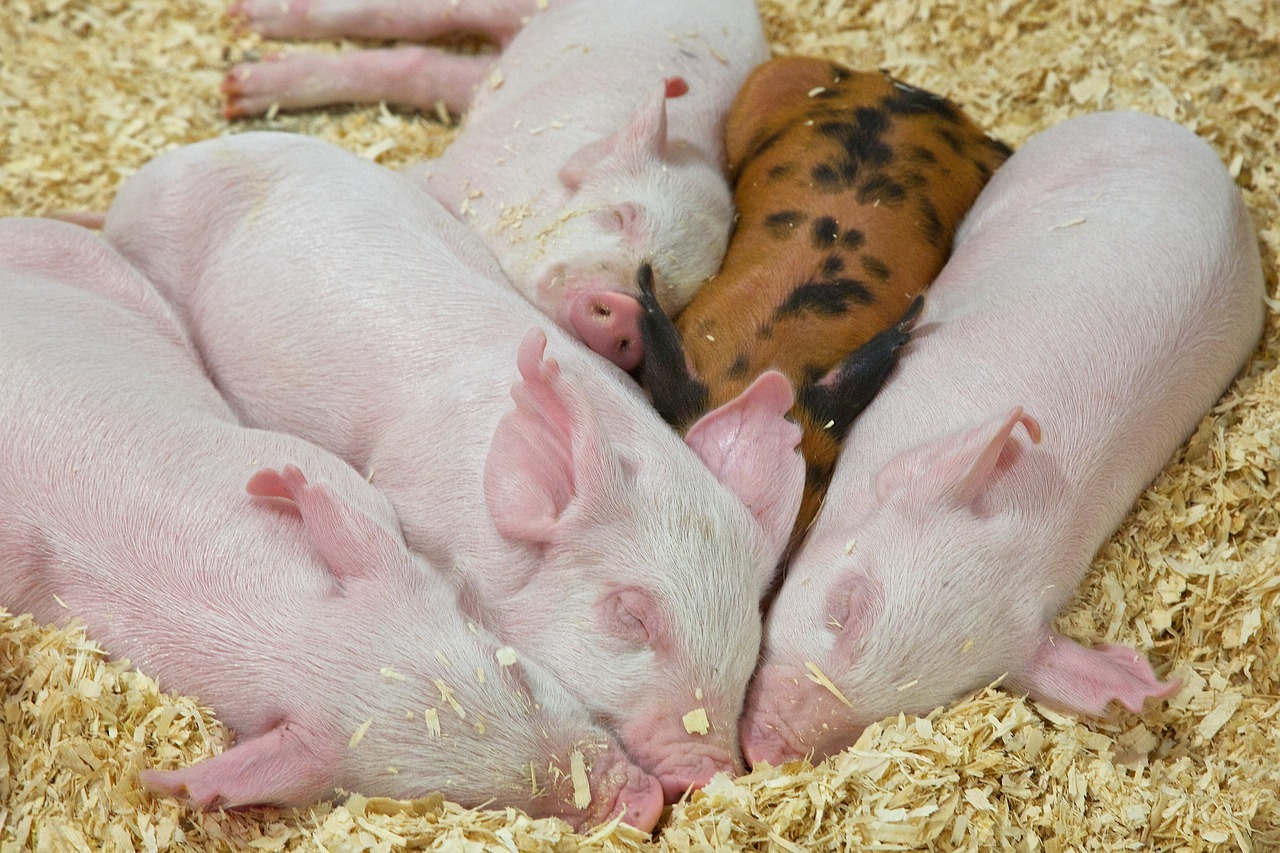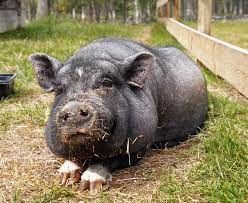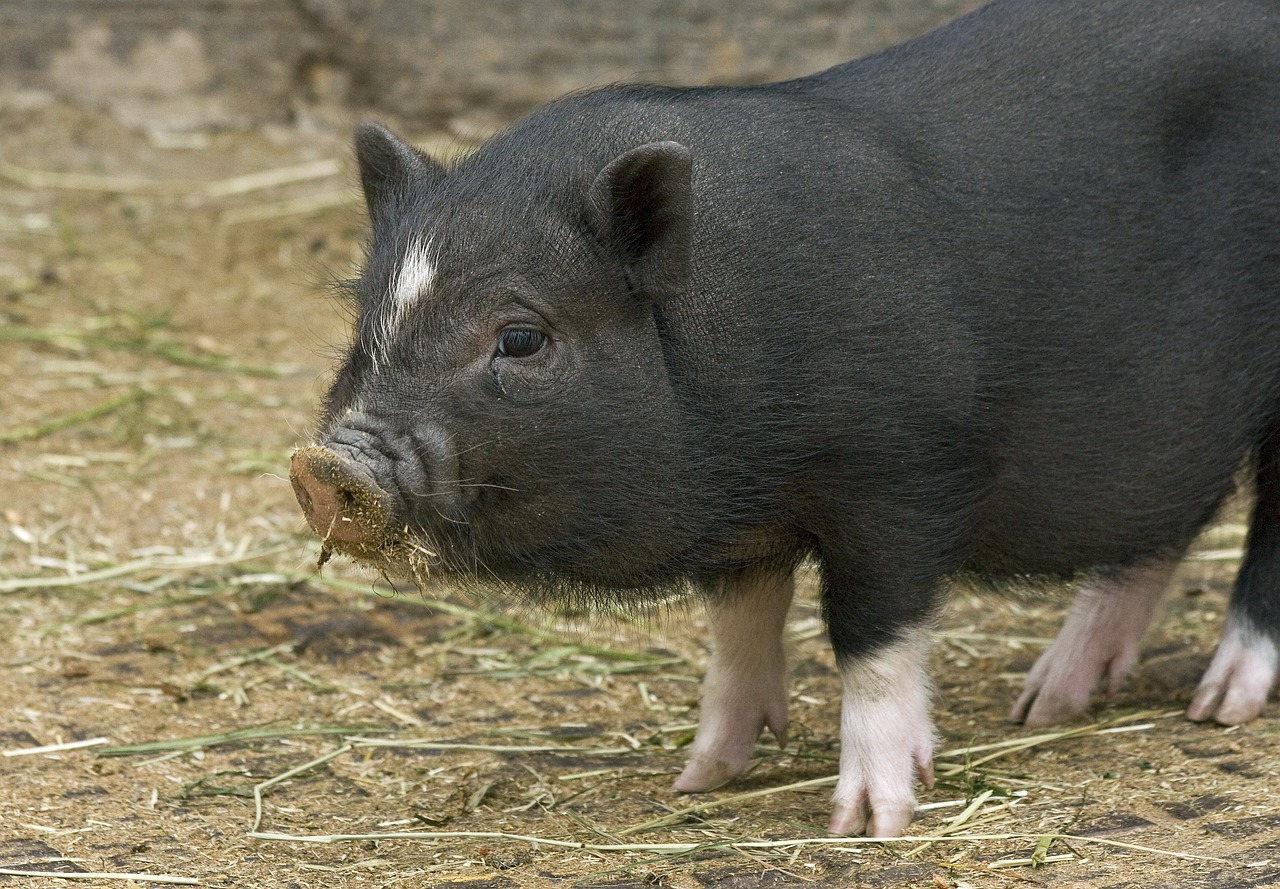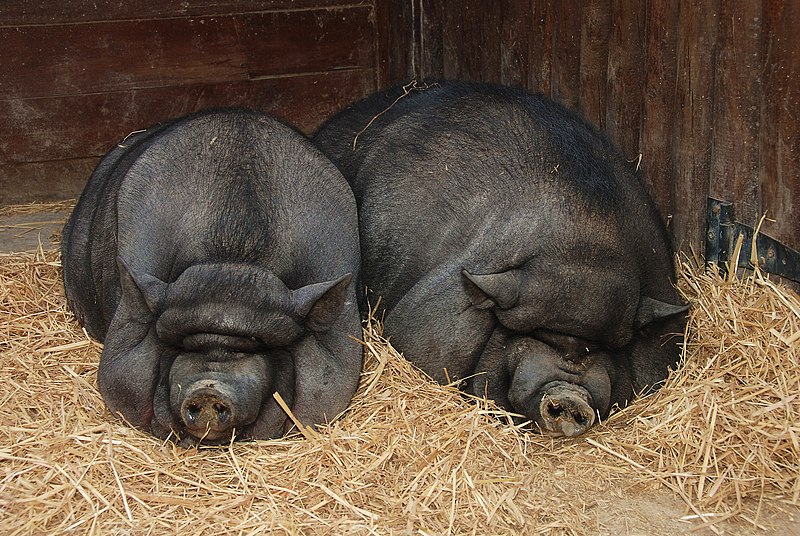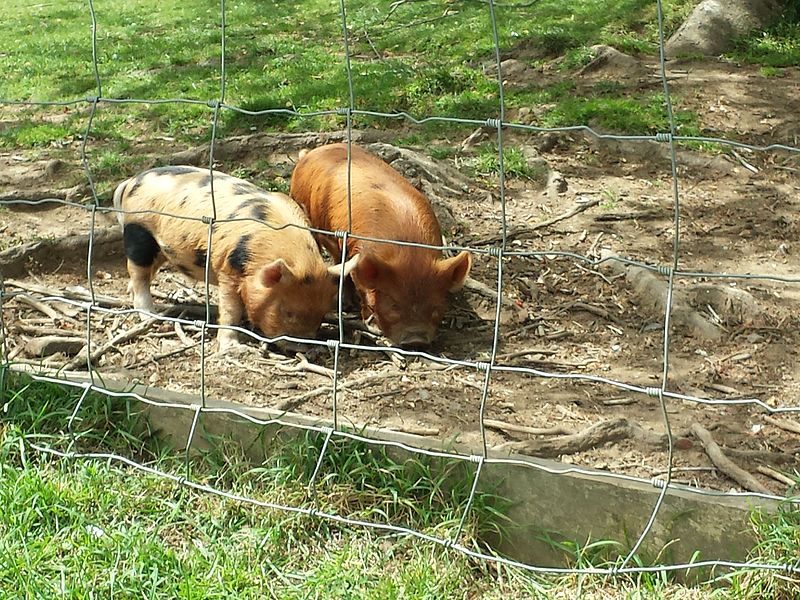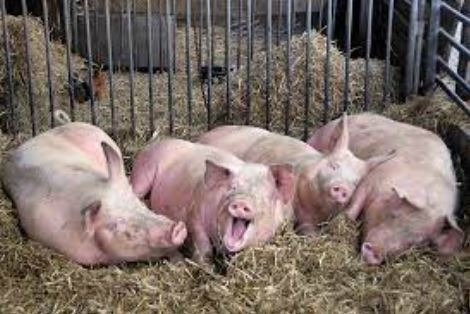Pigs have traditionally been connected with agricultural and farm life, but in recent years, they have also become more and more prevalent as domestic pets. Despite this, the question of whether pigs make suitable pets is still up for dispute. Pigs can be clever, loving, and simple to care for, according to some individuals, however, others claim they can also be loud, destructive, and challenging to teach. We will examine both sides of the debate and consider the benefits and drawbacks of keeping a pig as a pet in this post. Our ultimate goal is to provide readers with a complete understanding of whether or not pigs make suitable pets.
What is a pig?
The pig (Sus domesticus), sometimes known as swine, hog, or domestic pig to distinguish it from other Sus species, is a domesticated, omnivorous mammal with even toes and a hoof. It is disputed whether it belongs to Sus scrofa (the wild boar or Eurasian pig) or whether it is a separate species. Adult pigs normally weigh between 50 and 350 kg (110 and 770 lb), with well-fed animals even exceeding this range. Their head-plus-body length ranges from 0.9 to 1.8 m (3 to 6 ft). The breed has a significant impact on the weight and size of pigs. A pig’s head is particularly long and pointed when compared to the heads of other artiodactyls. Pigs, like their wild cousin, are omnivores, unlike the majority of even-toed ungulates. Pigs produce snorting and grunting noises.
Pigs are raised as livestock primarily to produce meat known as pork. Pigs are referred to as a passel, team, or sounder. Bones, skin, and bristles from the animal are also utilized to make goods. Pigs are maintained as pets, particularly the small kinds.
History
Around 11,400 years ago, in the Near East, wild boars were tamed into pigs; 8,000 years later, in China. During the Bronze Age, pig farming declined in the Near East but continued elsewhere. A third domestication event occurred as a result of the introduction of domestic pigs from the Near East to Europe, according to DNA evidence, which caused the Near Eastern genes in European pig stock to disappear. Pigs were domesticated independently in Western Asia and China, according to the pig genome, and human selection for domestic features fought against the homogenizing effects of gene flow from wild boars. The Spanish brought pigs to North America and the Chiloé Archipelago in the 16th century, and escaping pigs turned feral and harmed the ecology in numerous locations across the world. Today, one of the most common big animals on the earth is the domesticated pig.
Reproduction
If they are not successfully bred, female pigs enter estrus every 18 to 24 days when they are between the ages of 3 and 12 months old. The variance in ovulation rate can be linked to extrinsic variables like nutrition, environment, and the use of exogenous hormone supplements in addition to intrinsic factors like age and genotype. A typical gestation lasts 112 to 120 days.
Estrus lasts for two to three days, and standing heat is the term for the female’s outward indication of her desire to mate. The female is prompted to produce standing heat when she comes into touch with the saliva of a sexually mature boar. One of the pheromones that boars create in their submaxillary salivary glands to elicit a reaction from females is androstenol. Five interdigitating folds, or pads, found in the female cervix will grip the boar’s corkscrew-shaped penis during copulation. Due to the bicornuate nature of female uteruses, pregnancy cannot be confirmed without the presence of two conceptuses in each uterine horn. Pigs have maternal awareness of pregnancy between days 11 and 12, which is characterized by progesterone synthesis from a functional corpus luteum (CL). The CL must be preserved by embryonic signaling of estradiol 17 and PGE2 to prevent luteolysis by PGF2. By activating the genes necessary for CL maintenance, this signaling operates on the luteal and endometrial tissues to stop the CL from regressing. The CL predominantly depends on luteinizing hormone (LH) for maintenance throughout mid- to late pregnancy till delivery. To guarantee maximum reproductive performance, an animal diet is crucial before reproduction and during gestation.
European pigs produced one litter of piglets a year throughout the Middle Ages. By the nineteenth century, European pigs were regularly double-farrowing, or producing two litters of piglets annually. When this change happened is not obvious.
Keeping pigs as pets
People are worried about the welfare of pigs maintained as pets since it might be difficult to adequately care for them owing to the challenges of satisfying their extremely specialized demands. There are stringent regulations governing their feeding, identity, and mobility just like there are for farmed pigs.
It is strongly advised to learn as much as you can about pigs’ requirements to determine whether keeping one as a pet is a viable option for you.
Pigs are difficult pets for some reasons, including the following:
- Size. Piglets may appear adorable, but even small varieties (like the Vietnamese pot-bellied pig) quickly reach adult weights of 35–70kg, and even more if overfed. Some breeds, weighing 200 to 300 kg, or perhaps more, can reach the size of a pig raised professionally.
- Lifespan. These breeds have an average lifespan of five to 10 years; however, some can live up to 25 years.
- Temperament. Some pigs have a very excellent temperament, but others need to be treated carefully.
If you are considering raising pigs or already do, keep in mind the following additional factors:
- The rules for owning pigs as pets
- Environmental conditions
- The feeding, companionship, health, and welfare of pet pigs
Pigs have become more popular as pets in recent years, and many pig enthusiasts have bought “mini” or “micro” pigs to live in their homes as companion animals. Pigs may be amusing and gratifying company due to their intelligence and friendly nature, not to mention how adorable they are. Celebrity culture has had an impact on the pet pig obsession, with stars like Paris Hilton, Victoria Beckham, and Ariana Grande all posing with their porcine companions. Even one of Arianna’s music videos has her pet pig.
Pigs can be housebroken, led around, and even taught simple tricks. They are intelligent enough to be trained like dogs. But as more people keep pigs as pets, more pigs wind up in rescues as their well-intentioned owners find it difficult to fulfill the animal’s complicated demands.
Pigs may make terrific pets for a limited number of individuals given the space and resources they need and saving one can undoubtedly be extremely satisfying. The health and well-being of pigs are jeopardized when owners are uninformed, thus anyone considering purchasing a pet pig must examine the positives and downsides intelligently and honestly.
Which breeds of pigs are favored as pets?
In the United States, pigs are mostly farmed in eight different breeds. Based on their physical traits and attributes, these distinct breeds are employed for a variety of purposes. The only pigs that are frequently kept as pets are the pot-bellied pig, the tiny pig, and the kune kune pig.
Pot-Bellied Pig
Due to its relatively tiny size compared to bigger farm pigs or hogs, the pot-bellied pig is one of the most popular breeds of pigs. Pot-bellied pigs are renowned for their inquisitiveness, vivacity, and loving nature. In comparison to many other pig breeds, they are also simpler to train. Most dwarf pot-bellied pigs eventually reach a medium- to large-sized dog in size.
Miniature Pig
Tiny pigs are frequently kept as pets. These creatures, sometimes known as teacup pigs, need a lot of interaction and care to be properly trained. It is advised to maintain at least two tiny pigs because of their social nature so they always have a friend, even while you are not home.
Kune Kune Pig
The Kune Kune pig, commonly known as a “kunekune,” is a breed that is primarily raised for meat but is also an excellent pet. These little, hairy pigs are native to New Zealand and are prized for their cuteness and amiable nature. Additionally, kune kune pigs come in a range of hues, including gold, brown, and black as well as black and white patterns. Kune Kune pigs may frequently live and play indoors, unlike other pigs, which might sometimes be too big for the typical dwelling.
How big can ‘micropigs’ grow?
In terms of height and length, some so-called “micro pigs” may grow no larger than a medium-sized dog. Although pigs acquire weight relatively fast, even the smallest breeds often reach weights of 50 to 70 kg, or even more if overfed. When standard-sized pigs are sold by dishonest breeders as “micro pigs” when they are still very young, owners may find themselves with a 300kg pet pig within a year or so—a scenario that very few of us could manage.
Pigs often live for 10 years or longer, and with good care, they can even live to the ripe old age of 20. Unfortunately, ‘micro pigs’ sometimes only live for roughly 5 years since they are prone to health issues from being bred to being tiny and frequently do not receive adequate nutrients.
What do pet pigs eat?
Pet pigs, like all pigs, seem to be always hunting for food. Pigs are foragers, which means they spend a significant amount of their waking hours scouring the ground for roots, bulbs, insects, tiny rodents, and even reptiles to eat. Pigs require a diverse and nourishing feed as well as access to an outside space where they may forage for food as they would normally to be healthy and engaged.
Because they are sophisticated enough to open refrigerators, cabinets, and pantries to get to the food inside, pet pigs sometimes get into arguments with their human housemates over food. Their need to forage can also cause them to tip bins and other containers over. Pigs can act dangerously against anyone who attempts to go close to their food if they are not fed enough or if they just like eating a little too much. Pigs with this kind of hostility may also hurt people, especially kids, who are holding food to steal it from them.
Legal requirements mean that pet pigs must be fed a specialized diet rather than leftovers. In reality, it is against the law to feed garbage to pigs in the UK since it increases the likelihood that harmful illnesses would spread. Potential owners must think carefully about where they will get adequate wholesome food because buying specialized feed might be pricey.
Pros and cons to keeping pigs as pets
Pets appeal to people for a variety of reasons. Cats that are self-sufficient appeal to people who want little, independent pets. The company and loud personality of tail-wagging dogs may appeal to dog lovers. Owners of exotic pets value the distinctiveness of their reptiles and amphibians as well as the potential for conversation starters.
Pot-bellied pigs may also be fascinating pets that people adore having in their homes. Pigs are excellent pets because they are curious, teachable, and very intelligent. Many people have the misconception that pigs are filthy, stinky, sweaty messes. Such myths could discourage individuals from getting pigs as pets. Pot-bellied pigs may make lovely pets, yet they are not for everyone.
Although pigs are highly trainable and may learn more quickly than dogs, the behavior of pigs is very different from that of canines, according to The Pig Placement Network, a service that supports the adoption and placement of pot-bellied pigs. Before thinking about getting a pig as a pet, prospective pig owners should educate themselves on the complexities of pigs.
Pigs have a suspicious disposition since they are thought of as prey. Getting a pig to trust you might take some time. Pigs may also grow unyielding, sad, and quickly bored if not given enough care. Aggressive or destructive conduct could result from this. Pigs will continuously push the envelope. They may rapidly pick up that making noise will catch people’s attention. Pigs’ emotions closely resemble those of humans, unlike those of other pets.
One of the tiniest varieties of pigs found on farms is the pot-bellied pig, which was first domesticated in Vietnam. Although piglets may begin life little and charming, even a smaller pot-bellied pig can grow up to weigh between 100 and 170 pounds. People who are unaware of this beforehand contribute to the rising number of pet pigs who are turned into shelters.
Other factors that may determine whether a pig is an ideal pet for a person include:
With the right care, pot-bellied pigs may live for 12 to 15 years on average.
- Each community has its distinct laws governing pet pigs. Before adopting a pig, make sure they are allowed
- Pigs do not live in apartments. They will require physical activity and access to a yard with space for digging and exploring.
- Pigs have a keen sense of smell; thus they can detect eating or opening food right away.
- Keeping a pot-bellied pig healthy and living a long time requires finding a vet who is experienced with them.
Pigs with a pot belly might be a welcome addition to a household. Pigs may be wonderful pets if you are patient, educated, and trained.
Conclusion
The topic of whether pigs make good pets is covered in the article. Pigs are frequently grown for their flesh, but they are becoming increasingly widespread as house pets. The article looks at the benefits and drawbacks of having a pet pig, as well as their history, breeding, and upkeep needs. Some people argue that pigs may be intelligent, affectionate, and easy to care for, but others assert that they can also be noisy, destructive, and difficult to train. In the end, it is advised that people find out as much as they can about pigs’ requirements to decide whether keeping one as a pet is a practical choice.

